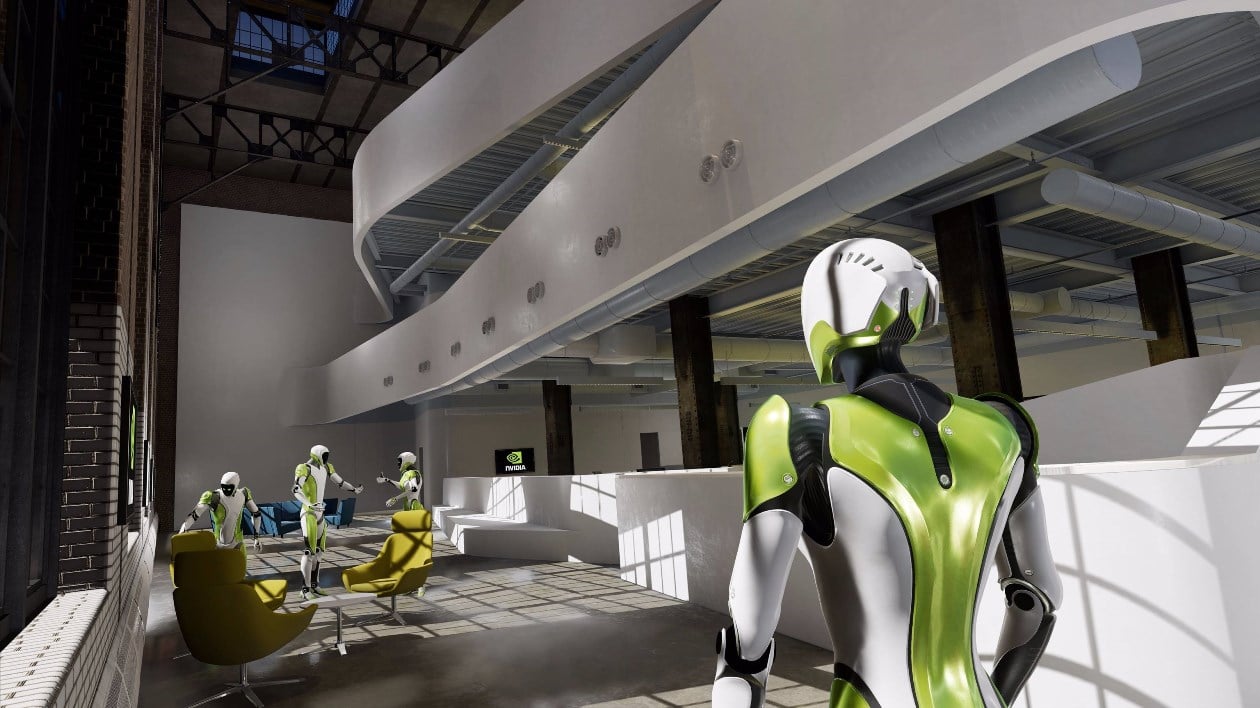Please add VR crossfire and sli support for those of us who want to use multiple gpus to enhance our fps and overall enjoyment of the game.
You are using an out of date browser. It may not display this or other websites correctly.
You should upgrade or use an alternative browser.
You should upgrade or use an alternative browser.
Add support for VR crossfire and sli
- Thread starter Hexapuma18
- Start date
All of these features are already in the game.Please add VR crossfire and sli support for those of us who want to use multiple gpus to enhance our fps and overall enjoyment of the game.
All of these features are already in the game.
VR crossfire is definitely not in game.
VR crossfire is definitely not in game.
Elite Dangerous Multi-GPU Support?
Just curious and I have never asked before, does elite dangerous support multi gpu usage? or will using more than one at a time cause issues in gameplay?
Elite supports both SLI and Crossfire multi-GPU tech... However, VR is unstable with multi-GPU systems. That's nothing to do with the game. FDEV can't fix that. You need to buy a better GPU if you want to use VR.
That said, while multi-GPU used to be the way to go - I had my GTX285s in SLI and they got me a very long way - it's no longer considered the meta because of the inherent problems it can bring. These are native to the system and not caused by a lack of support from devs.
this ^Elite Dangerous Multi-GPU Support?
Just curious and I have never asked before, does elite dangerous support multi gpu usage? or will using more than one at a time cause issues in gameplay?forums.frontier.co.uk
Elite supports both SLI and Crossfire multi-GPU tech... However, VR is unstable with multi-GPU systems. That's nothing to do with the game. FDEV can't fix that. You need to buy a better GPU if you want to use VR.
That said, while multi-GPU used to be the way to go - I had my GTX285s in SLI and they got me a very long way - it's no longer considered the meta because of the inherent problems it can bring. These are native to the system and not caused by a lack of support from devs.
For the longest time i used dual GTX 1080's in my system in SLI configuration.
one of the major technical problems SLI brings though is the amount of information being passed between the cards as they get better at preforming graphical tasks which also causes delay in the PCI-e lanes which can lead to things like audio stuttering and micro stuttering, because instead of the processor being able to cycle individual lanes immediately, it has to look at two lanes at the same time and wait for the cycle to sync before moving on to other lanes. obiviously this latency issue can be mitigated with a better processor but even high end processors have issue with the delay produced by SLI.
developers also have to specificaly make support for SLI and crossfire which not every developer will do. but VR is driver side not developer side.
I upgraded to a single RTX 2080 TI and it improved my frames as well as got rid of the PCI-e lane delay as my processor was no longer waiting on two lanes at the same time.
now an RTX 2080 TI technically has less cuda cores than two 1080's but because it has almost the same number of cuda cores as two 1080's, higher clock speeds, and better architecture all on the same card. It has more power than two of them combined and doesn't suffer from the latency issue generated by SLI configs, and the reality of this situation is, that there is actually about a 150% performance increase just because SLI isnt able to take full advantage of the resources of the second card.
I honestly recommend going with a single more powerful card and abandon SLI. especialy since card manufacturers are starting to abandon multi-gpu support anyways.
You will get full performance from one card without lane delay and you wont have to deal with the maximum 30% bonus with crossfire and (at most 50% with the new RTX bridge format) wasting half of a card which may end up hurting your performance instead of helping it anyways.
the reason why VR is so demanding on your graphics cards even in SLI is because they have to render the same scene twice at two different positions.
Last edited:
the reason why VR is so demanding on your graphics cards even in SLI is because they have to render the same scene twice at two different positions.
Nice reply, and this is last part is the thing that sort of makes dual GPU should make sense for VR, I do understand all the challenges, but just looking at it from a logical point, then something like GPU1 render left image and GPU2 render right image. So the only shuffling of any amount of data should be the frame buffer copy after each rendered image from GPU2 -> GPU1 and if there is a separate bridge connector, like NVidia SLI bridge, then no need to tax the PCIe bus.
I totally agree on the fewer GPUs is in almost all cases better than multi-GPUs. I have SLI for one reason, to be able to hook up all of my 6 monitors without having Windows Displaymanager go crazy with the frame buffer sync over the PCIe between the two GPU's...on my old i5, it could randomly occupy a full core for that task alone!!!
Heh, i left one of my GTX 1080's in there and dedicated it to physX so my RTX 2080 TI is completely on graphics. No SLI delay because they aren't compatible for it anyways xD. Im planning on getting a second or third monitor to plug into the 1080 eventually because apperantly my 1080 is bored as **** doing physx cause it only uses 5% of its resources.Nice reply, and this is last part is the thing that sort of makes dual GPU should make sense for VR, I do understand all the challenges, but just looking at it from a logical point, then something like GPU1 render left image and GPU2 render right image. So the only shuffling of any amount of data should be the frame buffer copy after each rendered image from GPU2 -> GPU1 and if there is a separate bridge connector, like NVidia SLI bridge, then no need to tax the PCIe bus.
I totally agree on the fewer GPUs is in almost all cases better than multi-GPUs. I have SLI for one reason, to be able to hook up all of my 6 monitors without having Windows Displaymanager go crazy with the frame buffer sync over the PCIe between the two GPU's...on my old i5, it could randomly occupy a full core for that task alone!!!
Last edited:
Heh, i left one of my GTX 1080's in there and dedicated it to physX so my RTX 2080 TI is completely on graphics. No SLI delay because they aren't compatible for it anyways xD. Im planning on getting a second or third monitor to plug into the 1080 eventually because apperantly my 1080 is bored as **** doing physx cause it only uses 5% of its resources.
I had 980 TI doing PhysX when I used my 1080 TI as the main GPU... and that worked fine for most part, until I realised why I had so sluggish behaviour at random times... and learned that despite Windows supporting multiple GPUs for driving multiple monitors, they are all rendered on the primary GPU and then a copy of the frame buffer happens to the GPU where the display is connected to. So do not put animated wallpapers, playing full screen movies on displays not connected to the primary GPU, as that can get Windows Display manager to go nuts....
So, basically be mindful of what you use on the monitors connected to the other GPU...and if there is room on the primary GPU, I would recommend to connect them there first...
Interesting.I had 980 TI doing PhysX when I used my 1080 TI as the main GPU... and that worked fine for most part, until I realised why I had so sluggish behaviour at random times... and learned that despite Windows supporting multiple GPUs for driving multiple monitors, they are all rendered on the primary GPU and then a copy of the frame buffer happens to the GPU where the display is connected to. So do not put animated wallpapers, playing full screen movies on displays not connected to the primary GPU, as that can get Windows Display manager to go nuts....
So, basically be mindful of what you use on the monitors connected to the other GPU...and if there is room on the primary GPU, I would recommend to connect them there first...
Im actually using a third party window manager that has a ton of options so ill see if that has the ability to dictate gpu useage
Check out this article from nvidia re: SLI VR for interesting info on how two screens can be rendered with SLI.

 developer.nvidia.com
Since that was written nvidia has added Turing to the supported hardware, noted here:
developer.nvidia.com
Since that was written nvidia has added Turing to the supported hardware, noted here:
 Also RTX adds usb-c and NVlink technology - it seems to me that nvidia has not "abandoned" SLI, otherwise why would they have upgraded to nvlink and provided a cadre of dev tools to implement SLI in VR? I agree with op that it could be cool, especially with 2 2070supers at the same price point as a 2080ti. Am I going to go SLI, no. Just agree it could be cool if well implemented in a heavy vr title like ed.
Also RTX adds usb-c and NVlink technology - it seems to me that nvidia has not "abandoned" SLI, otherwise why would they have upgraded to nvlink and provided a cadre of dev tools to implement SLI in VR? I agree with op that it could be cool, especially with 2 2070supers at the same price point as a 2080ti. Am I going to go SLI, no. Just agree it could be cool if well implemented in a heavy vr title like ed.

VRWorks - VR SLI

NVIDIA Turing Propels VR Toward Full Immersion
Over the last few decades, VR experiences have gone from science fiction to research labs to inside homes and offices. But even today’s best VR experiences have yet to achieve full immersion. NVIDIA’s new Turing GPUs are poised to take VR a big step closer to that level. Announced at SIGGRAPH...
blogs.nvidia.com
